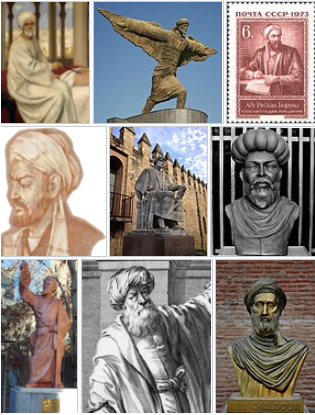
Assalamualaikum
Welcome to another edition of English Corner, my name is Rifki Kusmana. Did you know that Islam had a golden age of science during the medieval era in Mainland Europe? Here’s a summary of the scientific advancements that happened in that era.
An Indonesian Translation is available here.
The Science of the Islamic Golden Age
The Islamic Golden Age refers to a period in the history of Islam, traditionally dated from the 8th century to the 13th century, during which much of the historically Islamic world was ruled by various caliphates and science, economic development, and cultural works flourished. During the Golden Age, the major Islamic capital cities of Baghdad, Cairo, and Córdoba became the main intellectual centers for science and mathematics, medicine, engineering, and education.
Why did science technology flourish during this time?
Science and technology advanced during the Islamic Golden Age for many reasons. First, the pursuit of knowledge was encouraged both by the Islamic religion and the Islamic government. The government heavily patronized scholars, and the best scholars and notable translators, such as Hunayn ibn Ishaq, had salaries estimated to be the equivalent of those of professional athletes today. At the same time, paper technology was introduced from China, allowing for the production of books. Large libraries were built in cities throughout the Muslim empire helping technology and knowledge to be shared between scholars.
Acheivements of Noteworthyness
Science and Mathematics
The Arabs assimilated the scientific knowledge of the civilizations they had conquered, including the ancient Greek, Roman, Persian, Chinese, Indian, Egyptian, and Phoenician civilizations. Scientists recovered the Alexandrian mathematical, geometric, and astronomical knowledge, such as that of Euclid and Claudius Ptolemy. They then made advances in many areas including geometry and trigonometry.
Perhaps the most important mathematical advancement was in the area of algebra. Two great Islamic mathematicians, al-Khwarizmi and Omar Khayyam, helped develop algebra into a separate field of mathematics. In fact, the name “algebra” comes from the Arabic “al-jabr”, which means “reunion of broken parts.”
Medicine
Medicine was a central part of medieval Islamic culture. Responding to circumstances of time and place, Islamic physicians and scholars developed a large and complex medical literature exploring and synthesizing the theory and practice of medicine. Islamic medicine was built on tradition, chiefly the theoretical and practical knowledge developed in India, Greece, Persia, and Rome.
Islamic scholars translated their writings from Syriac, Greek, and Sanskrit into Arabic and then produced new medical knowledge based on those texts. In order to make the Greek tradition more accessible, understandable, and teachable, Islamic scholars organized the Greco-Roman medical knowledge into encyclopedias. Most major cities had a large hospital where anyone could go to seek healthcare. One of the largest hospitals in Cairo, Egypt was said to help 4,000 patients a day.
One of the most lasting influences of Islamic medicine was a medical book written by Ibn Sina called The Canon of Medicine. This book was used as the standard medical textbook both in the Islamic world and throughout Europe for hundreds of years.
Engineering
Due to the scarceness and importance of water in the Middle East, much of the efforts of Islamic engineers went into ways to store and move water. They built dams, irrigation canals, waterwheels, pumps, aqueducts, and cisterns. They also invented various ways to measure water and control the flow of water.
Islamic engineers also made significant contributions in the areas of optics, mechanics, clocks, and wind power.
Education
The centrality of scripture and its study in the Islamic tradition helped to make education a central pillar of the religion in virtually all times and places in the history of Islam. The importance of learning in the Islamic tradition is reflected in a number of hadiths attributed to Muhammad, including one that says “Seeking knowledge is obligatory upon every Muslim”. This injunction was seen to apply particularly to scholars, but also to some extent to the wider Muslim public, as exemplified by the dictum of al-Zarnuji, “learning is prescribed for us all”. While it is impossible to calculate literacy rates in pre-modern Islamic societies, it is almost certain that they were relatively high, at least in comparison to their European counterparts.
Muslims distinguished disciplines inherited from pre-Islamic civilizations, such as philosophy and medicine, which they called “sciences of the ancients” or “rational sciences”, from Islamic religious sciences. Sciences of the former type flourished for several centuries, and their transmission formed part of the educational framework in classical and medieval Islam. In some cases, they were supported by institutions such as the House of Wisdom in Baghdad, but more often they were transmitted informally from teacher to student.
Sources
- “Education”. n.p.: In Richard C. Martin (ed.). Encyclopedia of Islam and the Muslim World. MacMillan Reference USA, n.d.
- Boundless and Lumen Learning. Boundless World History. State University of New York OER Services, 2018.
- “History of the Early Islamic World for Kids: Science and Technology.” Ducksters, www.ducksters.com/history/islam/science_and_technology.php. Accessed 12 June 2022.
And that’s it for today’s English Corner, I hope you have enjoyed this article and I hope to see you again, someday, Thank you for reading.
Editor: Rifki Kusmana
Editor of the MDF English Corner





Komentar